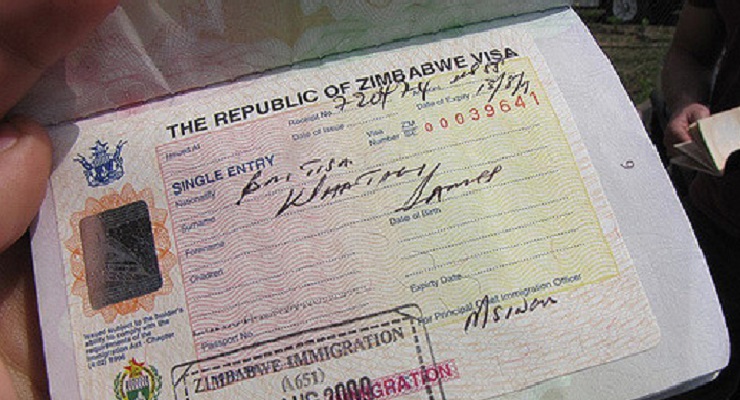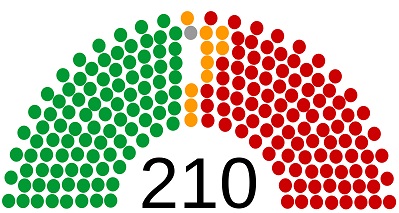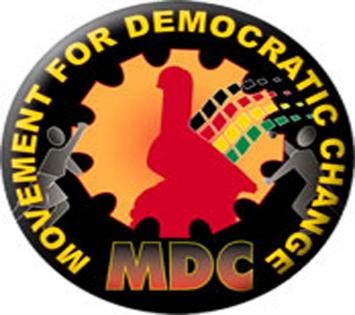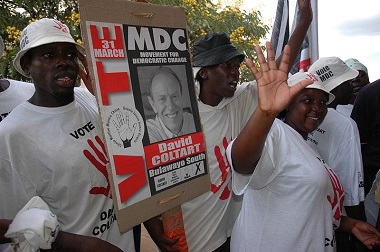
Arguably, the 2018 harmonized elections are setting the track for Zimbabwe’s medium-term political future. Another decisive factor will be the party’s annual people’s conference usually held in December. There are reports that some members of the ruling ZANU- PF are calling for the annual conference to be upgraded to an elective congress. So what does this mean?
Zimbabwean politics is a theater of conflicts and might be difficult to comprehend. Although it is seemingly designed as a kind of a multiparty democracy, a single party sets the agenda. Yet Zimbabwe’s parliament has had its fair share of lively parliamentary conflicting debates and robust election campaigns since 2000 when the main opposition Movement for Democratic Change (MDC-T) came into the fore.

A good working definition of one-party dominance is presented by Giovanni Sartori in his seminal work from 1976, “Parties and Party Systems: A Framework for Analysis“. It is simple, one-party dominance is when the same party wins an absolute majority in at least three consecutive elections. Under this definition, currently, a one party system is not applicable in Zimbabwe since ZANU-PF failed to win an absolute majority in 2008 parliamentary elections. However, ZANU-PF remains largely unchallenged in political control since independence in 1980.
As a former liberation movement in political power since independence, ZANU PF’s trajectory translates into a specific form of authoritarian democracy. It is rather like other liberation movements in the region, SWAPO in Namibia, Flelimo in Mozambique, ANC in South Africa and Chama Cha Mapinduzi in Tanzania.
ZANU-PF has somehow managed to anchor an enduring party dominance, based on a specific historical legacy even when it lost a parliamentary majority to MDC-T in 2008. This does not necessarily go hand in hand with a heroic narrative or patriotic history, which has ZANU-PF at its center. Rather, it has much to do with violence and intimidation of the people which usually result in presidential amnesty to the perpetrators after the election.
Zimbabwe is among several other countries that “combined democratic rules with authoritarian governance” due undemocratic tendencies according to Steven Levitsky and Lucan A. Way paper, “The Rise of Competitive Authoritarianism” in Harvard University’s Journal of Democracy. They went further to explain what they term competitive authoritarianism, a combination of democratic rules with authoritarian governance. They distinguished competitive authoritarianism from democracy on the one hand and full-scale authoritarianism on the other.
According to the authors, modern democratic regimes, although controlling many aspects of life, support a flourishing of democracy through a true open electoral process. They allow all citizens the right to vote, encourage dissenting voices, and give elected leaders freedom to conduct their duties. However, this does not mean that governmental interference is non-existent. Rather, government interference in democratic processes is to a minimum and does not warrant raising a red flag.
However, with competitive authoritarian governments, Levitsky and Way note that violations of above democratic principles “are both frequent enough and serious enough to result in an uneven playing field between government and opposition political parties”. Although elections are regularly held and are generally free of instances of massive fraud, the ruling party routinely abuse state resources to its advantage.
“The ruling party denies the opposition adequate media coverage, harass opposition candidates and their supporters, and in some cases manipulate electoral results. Journalists, opposition politicians, and other government critics may be spied on, threatened, harassed, or arrested. Members of the opposition may be jailed, exiled, or—less frequently—even assaulted or murdered. Regimes characterized by such abuses cannot be called democratic.”
A review of government activities in Zimbabwe in the past decade shows that the country is now a competitive authoritarian regime. Dissenting voices are muted and government does not listen to citizens. In 2016, the #This Flag and #Tajamuka (we protest) among other movements ushered a new lease of life to a Zimbabwe which is founded on solidarity, equality, grassroots democracy, and free of all form of oppression (Maisiri 2016). These people power movements threatened the rule of President Robert Mugabe and his ZANU-PF, known for their hardness towards dissenting voices. This is in spite of the movement being neither explicitly anti-Mugabe or anti-ZANU-PF (Youde 2016).

This view was supported by the independent Research and Advocacy Unit (RAU) in a 2016 paper titled “Where Are We Going” which noted that the Mugabe regime is intolerant of threats and takes to countering any threat with excessive violence. The paper gave examples of real experiences exemplified from the Gukurahundi (disturbances that rocked Zimbabwe 1983-87 where 20 000 people are said to have died), food riots 1998, the elections in 2002 and 2008 and the suppression of every little demonstration by pressure groups which are violently disrupted by the police.
The Research and Advocacy Unit was right when it noted that the biggest issue in Zimbabwe is probably this government-citizen engagement issue. This was exemplified with the way government responded to dissenting voices anchored by the #ThisFlag movement. Researcher Leroy Maisiri noted in 2016 that the government’s first response was to suspend all mobile service providers’ data promotions since most people relied on such promotions to access social media services. The government went a step further to threaten citizens through the Postal and Telecommunication Regulatory Authority (POTRAZ) by publicly warning those abusing social media of prosecution.
President Mugabe during burial of national hero Charles Utete on 09 August 2016 threatened the founder of the #ThisFlag campaign, Evan Mawaire, warning him of dire consequences and advising him to leave Zimbabwe if he is unhappy with what was happening in the country. Also, at a solidarity meeting organized by a splinter war veteran association at the ZANU-PF headquarters in Harare, Mugabe again warned Mawarire founder of the #ThisFlag campaign and others:
“I am warning Mawarire and others, l want to warn them very strongly; Zanu will not tolerate any nonsense that is done in the name of religion so keep to your religious side and we will respect you. Once you begin to interfere with our politics you are quoting trouble. You are courting real trouble. We know how to deal with our enemies who have been trying to bring about regime change agenda in the country; we have the means to defend and protect our hand won freedom. That is crucial to us. We have brought unity, unity in the country; and the people are unite; please don’t disunite our people” (Anon 2016, Mugabe warns and foreign embassies Newzimbabwe.com).
The military also joined the bandwagon of attacking the protestors by stating that it was tasked with what it termed ‘cyber warfare’ by training and deploying its personal to neutralize opinions on social media. These extremely partisan political statements by the military are another subversion of the will of the people and a vitiation of freedom of expression as a democratic right of peaceful demonstrations. National Army Commander Philip Valelio Sibanda, in a manner that could unduly threaten social media activists and discourage dissenting voice, was quoted in a Sunday Mail article, “Chiwenga Fires Warning Shots”, on the 5th of August saying:
“We are already dealing with these threats, as an army, at our institutions of training, we are training our officers to be able to deal with this new threat we call cyber warfare where weapons-not necessarily guns but basic information and communication technology- are being used to mobilize people to do the wrong things. We will be equal to the task when the time comes. The most important function, as outlined in the Constitution to protect Zimbabwe, its people, national security, territorial integrity and uphold the Constitution”.
The government through the police reacted to the 6 July 2016 riots and those that followed with arresting, incarcerating and alleging torturing hundreds of protesters some of whom are still being handled before courts.

Among those arrested was the #This Flag movement founder Evan Mawarire who was at first released on technical issue and re-arrested upon his return to Zimbabwe in February 2017. On October 1, 2016 concerned about increasing demonstrations, police issued the first notice to ban public protests within the central business district of Harare, initially for two weeks, but High Court judge Justice Priscilla Chigumba struck the ban down, but at the same time suspended his judgment for 7 days effectively perpetuating the ban for the two week period government had effected.
Upon effective force of the judgment, police issued another ban on demonstrations within the central business district of Harare this time for a month (September 16-October 15 2016). The protesters went back to the High court to challenge the latest ban which was upheld by Judge President Justice George Chiweshe. An appeal was lodged with the Supreme Court.
In an apparent reference to social movements and other dissenting voices that are demanding end to corruption, equality and jobs Police Commissioner is on record saying:
“We always stand ready to lawfully and decisively deal with malcontents, who quite often, are drenched in sheep skins when in actual fact they are shameful agents of tired crusade of illegal regime change agenda in Zimbabwe. The law will indeed be applied squarely, fairly and without fear or favour” The Herald 05 October 2016).
The ruling party ZANU-PF has since come up with its own #Our Flag campaign to counter the #This Flag campaign which they viewed as being sponsored by western elements (Britain, France and United States among others) to destabilize the country and effect regime change. The #Our Flag initiative culminated in a “million men march” in solidarity with President Mugabe and government on 25 May 2016. The marchers were addressed by Mugabe who thanked them for the solidarity and sent a clear message of anti-regime change to western countries.
In conclusion, this article has shown that Zimbabwe’s government is now a competitive authoritarian system as once described by Steven Levitsky and Lucan A. Way. 2017 has already seen social movements scaling down efforts to encourage government to act on high unemployment, rampant corruption and upholding with basic human rights due to threats of reprisals. It is also safe to say the threats by government have scaled down the 2016 momentum that had been built by these social movements. Currently there is virtually little activism. It remains to be seen how this statement will influence #This Flag movement and others to mute their voices. With the momentum towards the 2018 elections peaking up, one can only hope for peaceful credible elections.
References
- Anon.2016. General Chiwenga Fires Warning Shots. The Sunday Mail 04 August 2016
- Anon.2016. Mugabe threatens Mawarire and foreign embassies, says has means to deal with ‘our enemies’. The New Zimbabwe 27 July 2016.
- Anon. 2016. Police acquire $1m vehicles (updated with more pictures). The Herald 05 October 2016.
- Levitsk and Way, The Rise of Competitive Authoritarianism.
- Magaisa A. 2016. Social media – A critical analysis of the new big frontier of the democratic struggle. 12/08/2016
Maisiri L. 2016. Where to now, Zimbabwe? Beyond the “good” charismatic pastor. - Research and Advocacy Unit (RAU). 2016. A wandering into the disengagement of the state from its citizens.
- Youde J. 2016. As turmoil sparks the largest protests in years where is Zimbabwe headed?
Leave a Reply